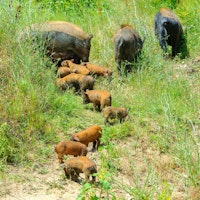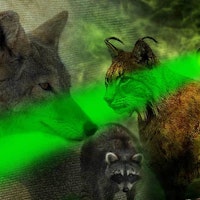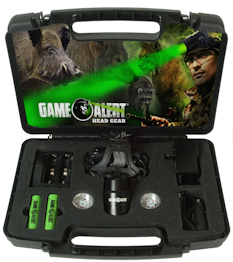
The rapidly increasing population of feral hogs in Texas presents a number of problems for land and livestock owners, as well as for the environment itself. In addition to the damage rooting hogs cause to the land, their presence poses a threat to the natural wildlife of the state, particularly the white-tailed deer population.

Local leaders in Anderson County, South Carolina have called in the South Carolina Wild Hog Task Force to educate residents on how to protect their property as the feral hog problem in the county continues to grow exponentially.

Feral hogs by definition are descended from domestic pigs gone wild. In North America, domesticated hogs were originally brought over from Europe by the Spanish conquistadors: Columbus in the West Indies (1493) and Hernando de Soto in Texas (mid-1500’s). These domesticated ancestors were diurnal (active during the day).
- NIGHT HUNTING HOGS, PREDATORS, VARMINTS
- Feral Hog Facts
- When "Old School" is what you need
- Shadow Games Night Hunting Hogs
- Green Hunting Lights - Understanding The Need/Application of Night Hunting Lights
- Tell-Tale Signs Of Wild Hogs In The Area
- So, Where Do I Aim For The Quickest Kill?
- Hog Lights – Choosing The Right Light For Night Hunting.
- How To Field Dress A Hog
- Feral Hog Hunting Checklist
- How To Stay Safe While Feral Hog Hunting
- Feral Hog Hunting: How to Take Advantage Of Hog Weaknesses
- Louisiana Bills to Loosen State Hog Hunting Regulations
- Feral Hogs Plaguing Rural Missouri
- The Signs of a Feral Hog
- The Impact Of Feral Hogs On Deer
- Escalating Feral Hog Population - A Big Concern In South Carolina
- The Nocturnal Behavior of Feral Hogs



